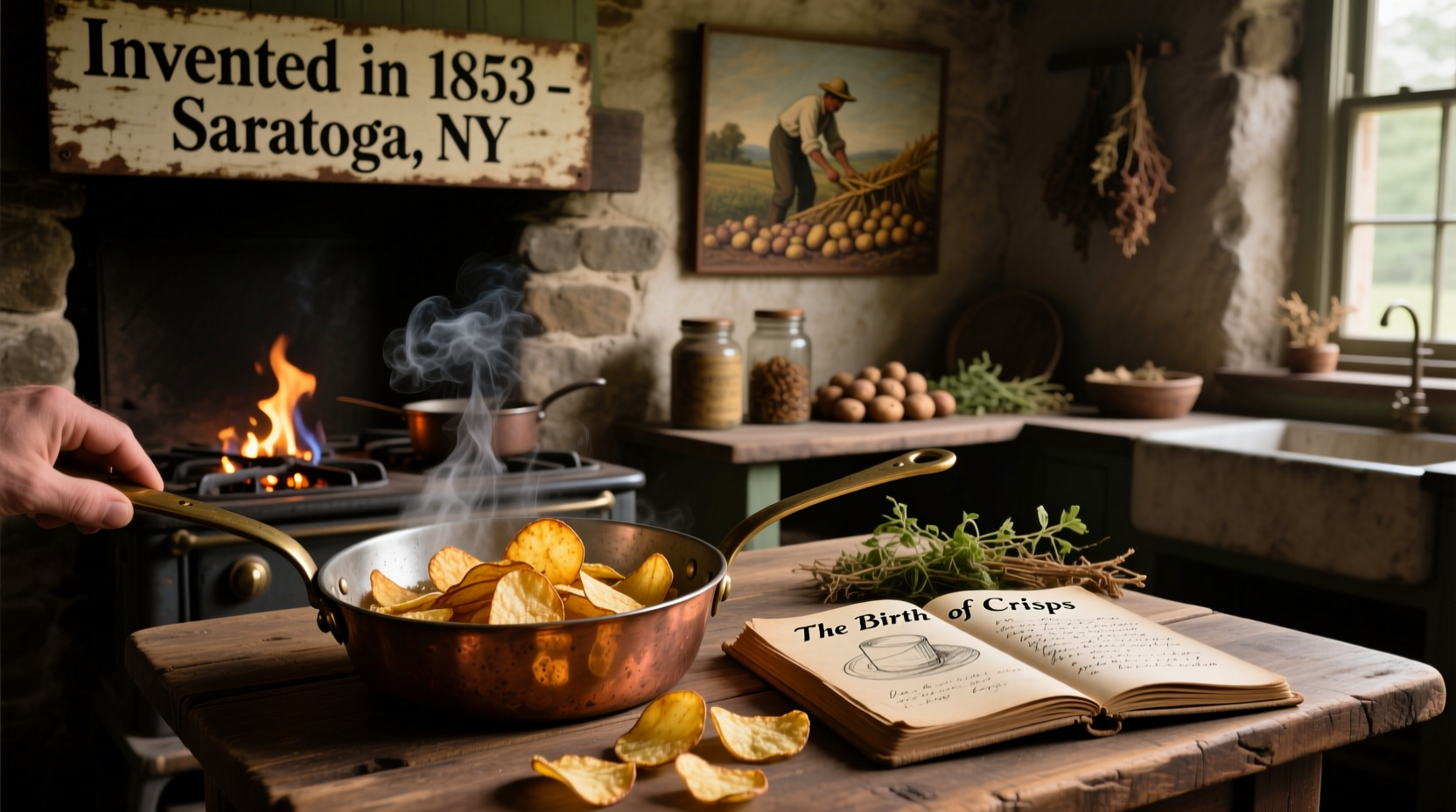The Moment That Changed Snack History Forever
Imagine a summer evening in 1853 at an upscale restaurant in Saratoga Springs, New York. A frustrated customer kept sending back his fried potatoes, complaining they were too thick. In response, chef George Crum (born George Speck) sliced potatoes paper-thin, fried them until crisp, and added extra salt—creating what would become the world's first potato chip. To everyone's surprise, the customer loved them. This single moment launched a snack food revolution that continues to thrive today.

Separating Fact From Fiction: The Verified Origin Story
While many stories circulate about potato chip origins, historical documentation points to George Crum as the true inventor. An 1889 article in the St. Joseph Gazette first documented Crum's creation, describing how he "sliced the potatoes very thin, fried them, and added plenty of salt." The 1902 Tuttle's Saratoga County Directory further cemented this account, listing Crum as the "originator of Saratoga chips."
| Claimant | Year Claimed | Supporting Evidence | Historical Consensus |
|---|---|---|---|
| George Crum | 1853 | 1889 newspaper account, 1902 directory listing, family records | Widely accepted by food historians |
| Catherine Wicks | 1848 | 1930s newspaper interview with no contemporary documentation | Considered less credible by experts |
| French Origin Theory | 1700s | No verifiable records of thin-sliced fried potatoes as snack food | Debunked by culinary historians |
How Potato Chips Evolved From Restaurant Specialty to Global Phenomenon
For decades after Crum's invention, potato chips remained a regional specialty known as "Saratoga Chips." The transformation from luxury restaurant item to mass-market snack required several key innovations:
- 1890s: Small vendors began selling handmade chips in barrels
- 1920s: Laura Scudder invented the sealed waxed paper bag in California, solving the freshness problem
- 1930s: Herman Lay began mass-producing chips using automated slicers and continuous fryers
- 1950s: Flavor innovation began with the introduction of barbecue and sour cream & onion
The Cultural Journey of Potato Chips Worldwide
As potato chips spread globally, they adapted to local tastes while maintaining their core identity. In the UK and Ireland, they're called "crisps" and traditionally served plain or with salt & vinegar. In Canada, ketchup-flavored chips became a national favorite. Japan embraced exotic flavors like wasabi and nori, while India developed masala-seasoned varieties. This global adaptation demonstrates how a simple 19th century invention became one of the world's most universally loved snacks.
Why Understanding Potato Chip History Matters Today
Knowing the true origin of potato chips isn't just trivia—it connects us to important cultural narratives. George Crum's story represents the often-overlooked contributions of Indigenous and African American innovators in culinary history. The evolution from hand-cut restaurant specialty to mass-produced snack illustrates broader patterns in food industrialization. Most importantly, understanding this history helps us appreciate how a simple solution to a customer complaint created a snack food category worth over $30 billion globally today.
Practical Takeaways for Food Enthusiasts
Armed with this historical knowledge, you can:
- Identify authentic "old school" potato chip recipes that honor the original preparation method
- Appreciate regional variations as cultural adaptations rather than mere flavor experiments
- Understand why certain production techniques (like kettle cooking) preserve traditional texture
- Share the true story when discussing snack food history with others











 浙公网安备
33010002000092号
浙公网安备
33010002000092号 浙B2-20120091-4
浙B2-20120091-4